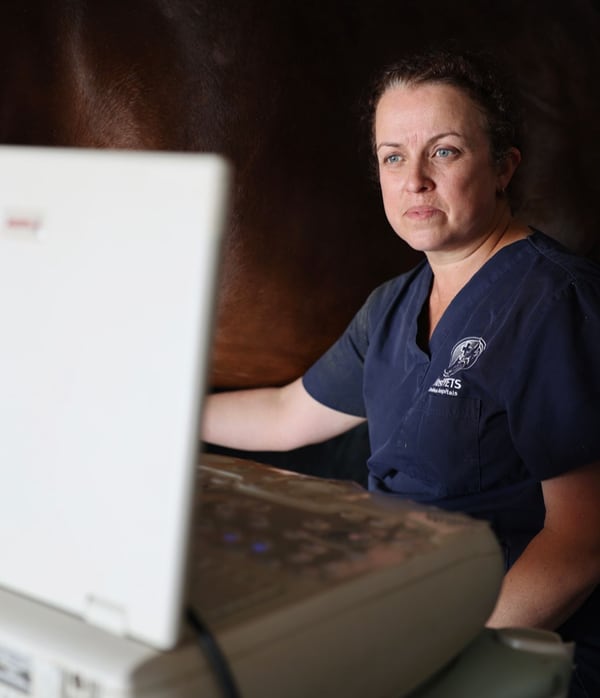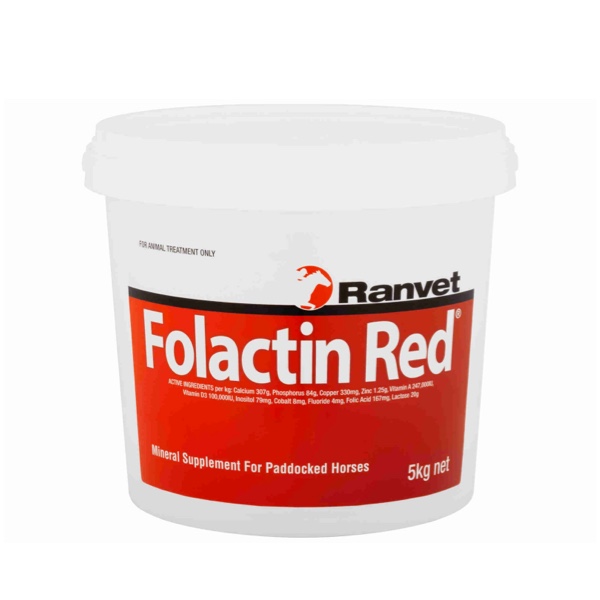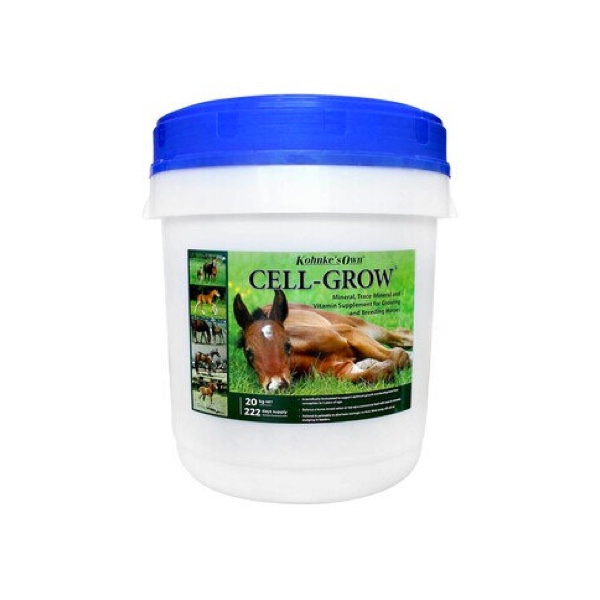Placentitis can be a devastating problem in the horse leading to abortion, stillbirths or weak or premature foals. It is the most prevalent cause of premature delivery of a foal and accounts for over half of the pregnancy losses in Australia. Placentitis is inflammation of the placenta, the temporary organ that forms to support the foal while it is in the mare during pregnancy.
Normal Anatomy Of The Placenta & Reproductive Tract
Throughout pregnancy the placenta functions to allow selective exchange of gases, nutrients and waste products between the foal and the mare. A healthy placenta is therefore necessary to allow the pregnancy to be maintained.
In the normal mare the uterus provides a sterile environment for the foal to develop. The placenta is derived from the embryo and is made up of two membranes. The amnion is the thin, pale membrane that surrounds the foal during pregnancy. The thicker chorioallantois is the red vascular membrane that is covered in villi (microscopic finger-like projections) that attach to the lining of the uterus (endometrium). The chorioallantois is diffusely attached to the endometrium except at an area that lies adjacent to the cervix. This area is known as the cervical star and is the area of the placenta that the foal breaks through at birth.
The foetus and placenta are protected from microorganisms and foreign material by the normal cervix and lower reproductive tract, which act like a physical barrier. The thick muscular cervix lie between the vagina and uterus and remains closed during the normal pregnancy. Cells within the cervix and lower reproductive tract produce mucus which, under the influence of progesterone during pregnancy, is viscous and impermeable to bacteria and foreign material. A thick mucus plug forms in the cervical canal and projects into the vagina.
Causes of Placentitis
A major cause of placentitis is due to bacterial or fungal infection that enters via the vagina and breaches the cervical barrier, a process known as ascending placentitis. Aspiration of air and faeces into the vagina can occur in mares with poor conformation or injury to the cervix or vulvar opening . In some mares the vulvar opening is not vertical and in opposition. This can occur in any age but is most commonly seen in older or underweight mares where the anus becomes sunken, pulling the top of the vulvar into a horizontal position. Injury to the cervix and vagina from previous foalings may allow penetration of infection past these structures. Another proposed mechanism for infection breaching the cervical barrier involves the presence of abnormal bacteria in the reproductive tract. Production of enzymes by these bacteria is thought to degrade the mucus lining the vagina and cervix allowing bacteria access to the placenta.
Infection normally concentrates at the cervical star although can spread throughout the placenta. The migration of bacteria leads to inflammation of the placenta, stimulating the tissue to produce prostaglandin, a hormone that may cause the uterus to contract, leading to premature labour.
As more placenta becomes inflamed and thickened it begins to pull away from the uterine lining. This leads to a decrease in oxygen and nutrients to the foal, thereby retarding its growth or leading to its death. Infection can also extend across the placenta to the foal resulting in abortion or, if the infection is of low intensity, the birth of a weak, infected foal.
Separation of the placenta from the uterus also has implications for birth. In normal pregnancy, the placenta remains attached to the uterus allowing the foal to rupture the membranes at the cervical star. If the placenta separates prematurely at the area adjacent to the cervix, the membranes may not rupture but will be delivered intact around the foal, a ‘red-bag’ delivery. This premature placental separation, if unattended, will result in a stillbirth due to suffocation of the foal.
The placenta can also become infected via blood borne organisms or from residual infection of the uterus. Fungal infections are rare but usually result in abortion or a foal that rapidly dies after birth. Diseases of the mare such as colic, diarrhoea or tooth disease can lead to infection and toxins in the mare’s blood crossing the maternal-foetal blood barrier and thereby affecting the placenta. In humans, women with tooth infections are 7 times more likely to either abort their pregnancy or give birth to an underweight child . All common organisms that produce uterine infections in mares are capable of producing placentitis. A low-grade infection acquired at or before the time of breeding can lie latent for a period of time before extending to the placenta.
Equine herpes virus (EHV) is the most common viral cause of placentitis and abortion in Australia. While the overall occurrence of this disease is low (approximately 7% of abortions), it is highly contagious and can cause abortion storms on some studs. There are five herpes viruses in Australia with type 1, and occasionally type 4, causing outbreaks of abortion and respiratory disease in horses. Abortion usually occurs between 7 and 11 months gestation with the mare seldom showing evidence of respiratory infection or other illness. Abortion occurs suddenly and, if late in the pregnancy, may produce a live, weak foal that invariably dies.
EHV is throughout Australia and is a common cause of ‘colds’ in young horses. The majority of older horses do not show clinical signs of infection. Once infected, horses carry the virus for life and, when stressed, the virus is reactivated and excreted in body fluids, contaminating the environment for up to 2 weeks. It is rare for a mare to abort again due to EHV1 and following isolation of the mare for 30 days to prevent virus spread, can be bred again.
Hairy Caterpillars and Placentitis
Equine amniotic and foetal loss syndrome (EAFL) was first described in Australia in 2004 and is a condition in mares in which early and late term abortions occur. The condition was first recognized in the USA and termed mare reproductive loss syndrome(MRLS). In Australia it is thought that some of these pregnancy losses are the result of ingestion of parts or all of the Processional Caterpillar (Ochrogaster lunifer), with a different species, the Eastern Tent Caterpillar (Malacosoma americanum) responsible in the USA. It has been noted that horses do eat these caterpillars and their larvae when grazing. Once ingested it has been demonstrated that the barbed hairs on the outside of the caterpillars can penetrate through the intestine of the mare directly into the placenta and foetus, resulting in infection and abortion of the foetus.
Processional Caterpillars hide in communal nests at the base of trees or in branches during the day. These nests are composed of silk, old skins and other debris. Hairs from old skins in these nests can be spread over adjacent vegetation resulting in ingestion by grazing mares. Ingestion can also occur
when migrating caterpillars leave their nests at night, travelling over paddocks to feed or find new host trees. In Australia the Processionary Caterpillar feeds on Wattle, White Box and Beefwood trees, with their eggs hatching in spring to form the caterpillar larvae. Research is currently being undertaken in Australia into the causal factors and control of this syndrome.
Common Signs Of Placentitis
Unfortunately, there is not a consistent clinical sign apparent in all mares that have placentitis. Commonly reported signs are premature udder development or ‘bagging-up’, vaginal discharge from as early as five months gestation. Normal mares undergo udder development 2-4 weeks prior to birth. The udder development can be associated with lactation and in severe cases, milk can be seen leaking down the mare’s legs. Softening of the cervix and release of the mucus plug may allow discharge to be released from the uterus. Depending on the stage of pregnancy the above clinical signs are followed by either abortion or the birth of a small, weak foal that may be infected (septic) or develop sepsis. Alternatively, foals may present as ‘dummy’ due to chronic oxygen deprivation in the uterus. There are many mares with placentitis that cannot be identified by the owner as they do not exhibit premature udder development or a vaginal discharge. These mares may abort or produce a compromised foal.
Diagnosis
Diagnosing placentitis in a mare can be difficult in some cases. Arriving at a specific cause for placentitis often proves to be more challenging. It is important that a thorough history of the mare is obtained. Information including foaling due date, recent illness, previous problem conceptions or pregnancies, in-contact horses, and vaccination status may be relevant to the diagnosis.
Early diagnosis of this problem is critical to be able to begin effective treatment that can result in the survival of a healthy foal. The ability to diagnose placentitis before clinical signs of premature lactation or vaginal discharge are observed will improve the chances of successful treatment. If a mare has a previous history of abortion then an early diagnosis can be achieved by performing serial ultrasound examinations of the placenta and foetus from 150 days of gestation. The procedure involves using a high powered ultrasound machine to examine through the abdomen of the mare to detect subtle changes in the placenta and foetus although focal areas of placentitis may be impossible to detect. Ultrasound examination of the placenta rectally is also performed. Some mares with placental infection can abort spontaneously and may not be identified via ultrasound as thickening or separation of the placenta may not have occurred.
A variety of samples for laboratory evaluation can be useful in determining the cause of placentitis. Samples of vaginal discharge may be collected from the mare or from the foal or placenta following foaling or abortion. It is critical that samples are taken from a freshly aborted foetus to prevent contamination with opportunistic infections. Often the placenta is too contaminated with dirt for microbiological samples, however it is important that the placenta is examined carefully and evidence and position of disease recorded and sampled. Early treatment of placentitis is critical in improving the survival rate of foals and should be commenced prior to the results of laboratory tests.
Treatment
A horse foetus, unlike many other species, matures in the final five to seven days of pregnancy, and if removed from the mare before this time will usually die. In mares with placentitis, the foal will often respond by maturing more quickly as a result of the stress. Stressed foals can be born early and survive with minimal care, if the infection develops slowly and premature delivery can be delayed. Therefore, if infected mares can be identified early, and treated to delay delivery, the chances of foal survival can be improved and the need for intensive hospitalization minimised.
Management of placentitis is aimed at fighting the infection, reducing the inflammatory response, supporting the pregnancy and treating any underlying illnesses. Treatment outcomes are optimised by a combined approach of ultrasound examination, antibiotics, anti-inflammatory drugs and progesterone until the birth of the foal. Potentiated sulphonamides are a good initial antibiotic because of their broad-spectrum activity against a range of bacteria and their ability to cross the placenta. Anti-inflammatory drugs such as flunixin meglumine and phenylbutasone may help to decrease the production of prostaglandins (a chemical involved in abortion). Altrenogest, a synthetic progesterone, is thought to assist in decreasing the effects of prostaglandins and therefore help maintain pregnancy. Unfortunately there is no specific treatment for EHV1 and foals born alive will die within a few days of birth despite intensive treatment.
Prevention
Mares should be in good body condition (but not fat) before breeding and throughout pregnancy and lactation. They should have regular dental and hoof care to minimise blood born bacterial diseases. Prevention measures should include the use of clean, minimally contaminated breeding techniques, to reduce the occurrence of uterine infection at mating. Pregnant mares should be kept in small groups and isolated from horse that are new to the premises. This will help minimize the risk of an infectious outbreak on the stud. Vaccinations for equine herpes virus are available to help control this disease and can be given at the 5th, 7th & 9th months of gestation. While this vaccine does not produce total immunity, it may prevent some abortions and will reduce the spread of the infection. If Processionary Caterpillars are suspected then nests should be identified and removed and pregnant mares should be in paddocks away from where native trees that house these nests grow.
Identifying mares that are at a higher risk of developing placentitis is advised. This would include mares that have had previous episodes of abortion or infection, or older mares with poor reproductive conformation. These ‘at risk’ mares should be monitored closely with monthly ultrasounds through pregnancy to identify subtle signs of placentitis. For mares with poor vulvar conformation, a Caslick surgery may be indicated.
Placentitis in mares can be a significant problem for horse owners, stud managers, and veterinarians. Abortions and foal death can occur when even the most comprehensive interventions are utilised. These foal losses represent a considerable emotional and economic cost to the equine industry. Current research is advancing prevention, early detection and treatment methods. However, by implementing correct breeding protocols, horse owners and veterinarians can help reduce the risk of foal death.



